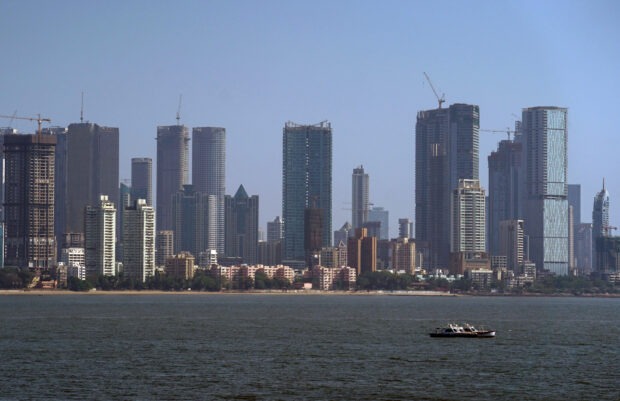India’s banking system liquidity deficit jumps to over 4-year high

Mumbai’s financial district skyline is pictured, after air pollution level started to drop during a nationwide lockdown to slow the spreading of the coronavirus disease (COVID-19), India, April 24, 2020. REUTERS/Hemanshi Kamani/File photo
MUMBAI – India’s banking system liquidity deficit is at its widest in over four years ago, amid tax outflows and the lack of any major inflows, traders said on Wednesday.
Banking system liquidity deficit jumped to 1.47 trillion rupees ($17.67 billion) as on September 18, the highest single day shortfall since April 23, 2019, while banks have borrowed a record 1.97 trillion rupees from the central bank’s Marginal Standing Facility window.
Advance tax payments took place last week, while outflows towards Goods and Services tax will be completed by Wednesday, with bankers estimating aggregate outflows of up to 2.50 trillion rupees.
The impact has magnified as the twin outflows have occurred in the same reporting fortnight, at a time when a chunk of the money is not available for use as it is blocked in the incremental cash reserve ratio (I-CRR).
Moreover, “another drain on rupee liquidity could be from RBI’s (Reserve Bank of India) FX intervention if depreciation pressures on the rupee persist,” said Gaura Sen Gupta, an economist with IDFC First Bank.
While the RBI is winding down the I-CRR, which was imposed on banks in August, this is being done in phases and is adding to the liquidity tightness, traders said.
The central bank will release 25 percent of the funds under I-CRR on Sept. 23 and the remaining 50 percent on Oct. 7, while the government’s month-end inflows will start only in the last week of September.
The shortage has kept upward pressure on overnight rates, with interbank call money and TREPS rate staying in the 6.75 percent-6.90 percent band.
READ: India’s central bank seen to hold rates at 6.5% through Q1 2024, cut in Q2
Upasna Bhardwaj, chief economist at Kotak Mahindra Bank, expects the RBI to keep liquidity tight in the near term in order to keep short-term rates elevated, given the pressure on the rupee and underlying inflationary risks, which may also prevent the central bank from announcing variable repo rate auctions.
READ: India’s economic growth set to accelerate to its fastest in a year
The liquidity deficit will, however, narrow towards the end of this month and the beginning of October as government spending picks up and the I-CRR is completely wound down.
($1 = 83.2125 Indian rupees)